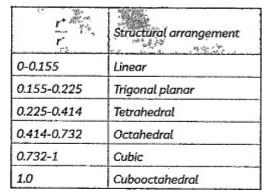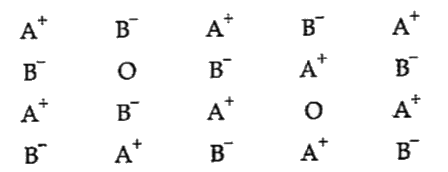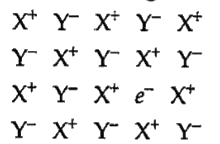Read the passage given below and answer the question. A metal excess defect is one of the defects seen in the crystal structures. The other defect is metal deficiency defect. These are the nonstoichiometric inorganic solids that contain constituent elements in non-stoichiometric ration because of the defects in their crystal structures. This defect is caused due to anionic vacancies and by the presence of extra cations in the interstitial sites. When alkali metal halides are heated in an atmosphere of vapour of the alkali metal, anion vacancies are created. This anion is then diffuse to the surface of the crystal and combine with newly generated metal cations.
In the given table the cation and amion radius ratio is given, which are helpful in predict the co-ordination number and geometry.
 .
.
The coordination number of cation occupying an octahedral void is :
A
4
B
6
C
8
D
12
Text Solution
The correct Answer is:B
In octahedral voids cation is in contact with the six anions.
|
Topper's Solved these Questions
Similar Questions
Knowledge Check
The crystal with metal deficiency defect is:
ANaClBFeOCKClDZnOThe crystal with metal deficiency defect is:
ANaClBFeOCKClDZnOThe crystal with metal deficiency defect is
ANaClBFeOCKCIDZnO
What are metal excess defects in crystals ? How are these caused ?
View SolutionWhat are metal excess defects in crystals ? How are these caused ?
View SolutionThe crystal with metal deficiency defect is:
View SolutionExamine the given defected crystal

Answer the following questions:
What type of stoichiometric defect is shown in the crystal ?
View SolutionExamine the given defective crystal :

Answer the following questions:
Is the above defect stoichiometric or non stoichiometric?
View Solution
